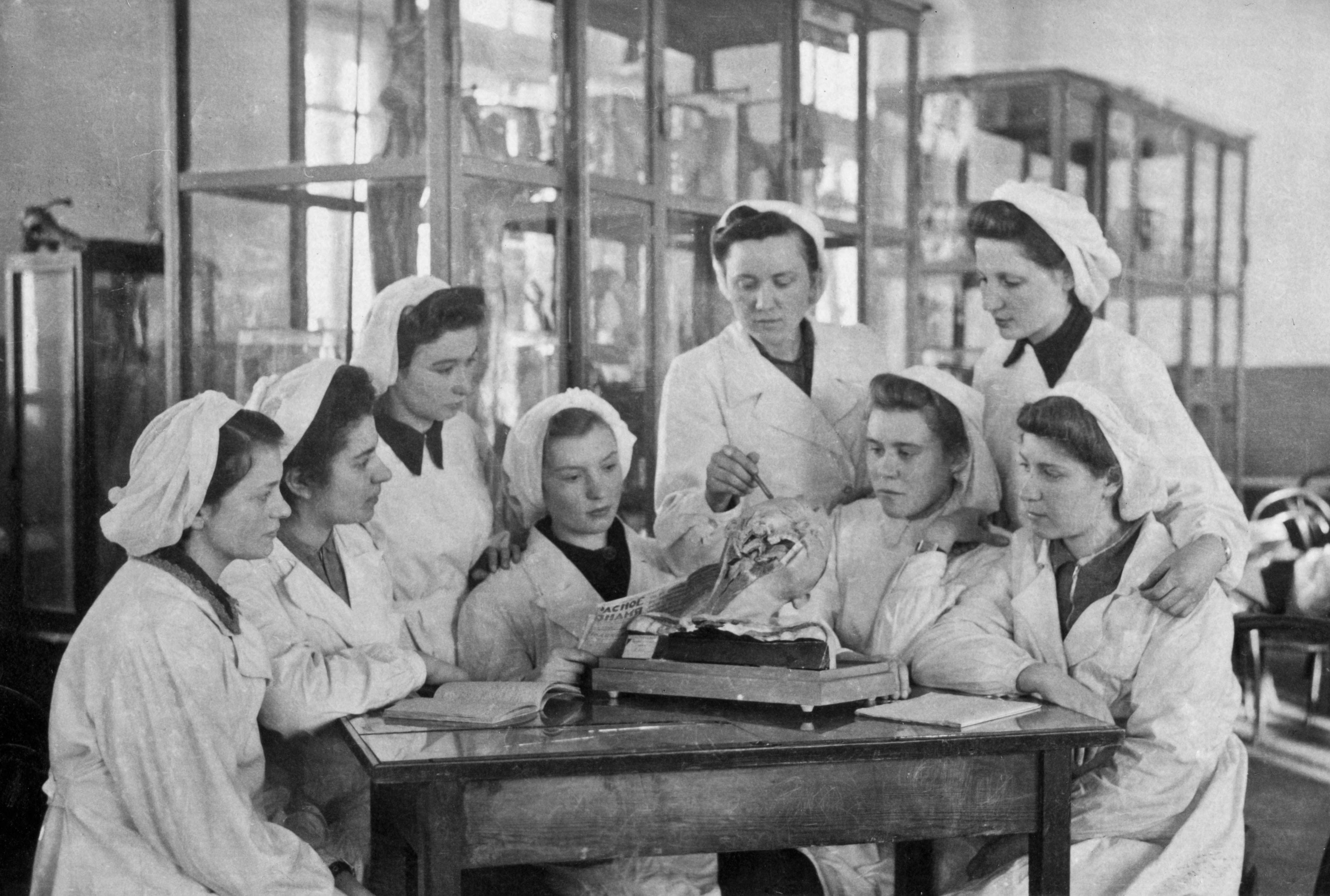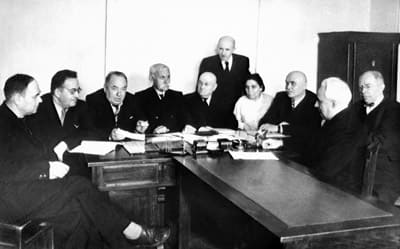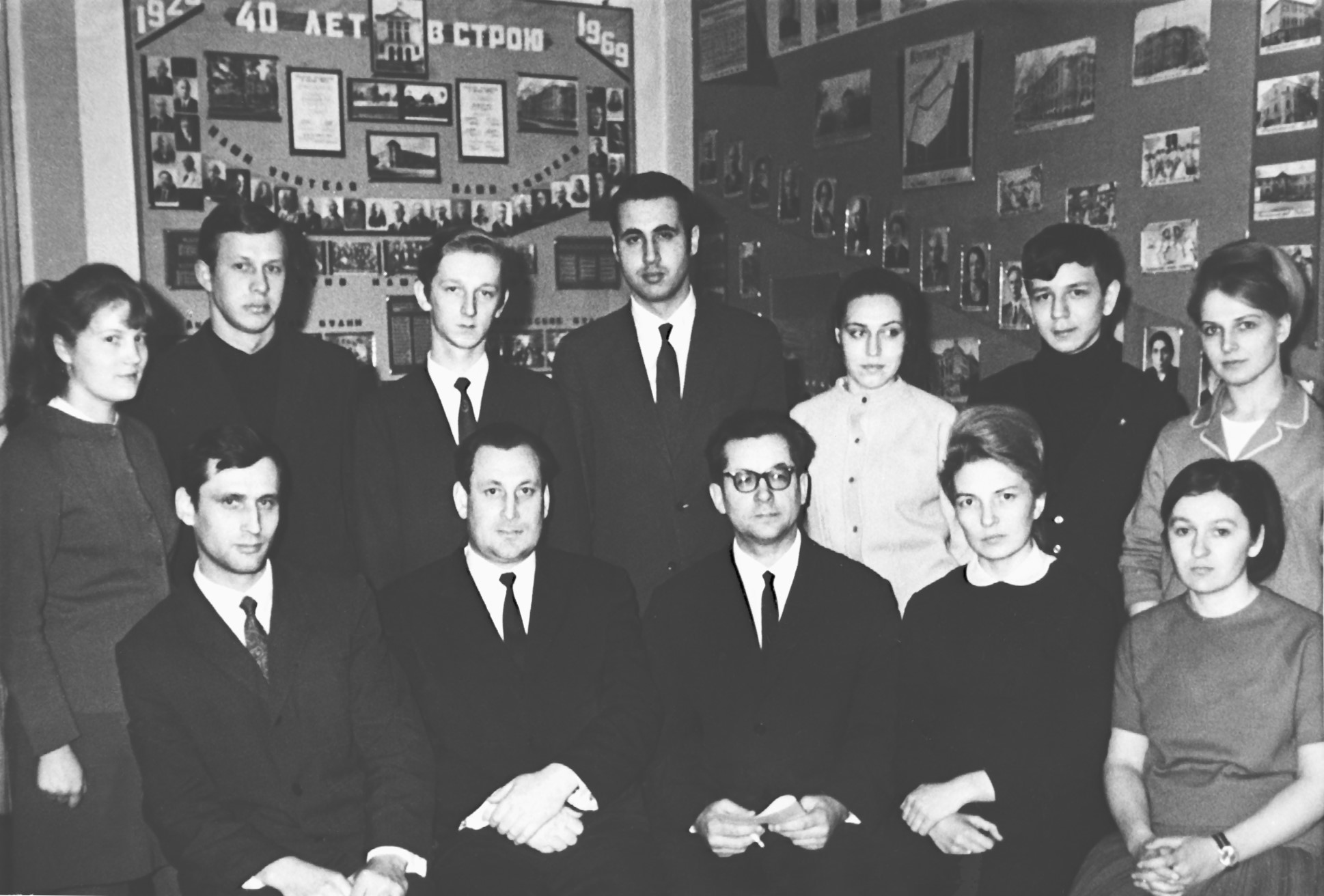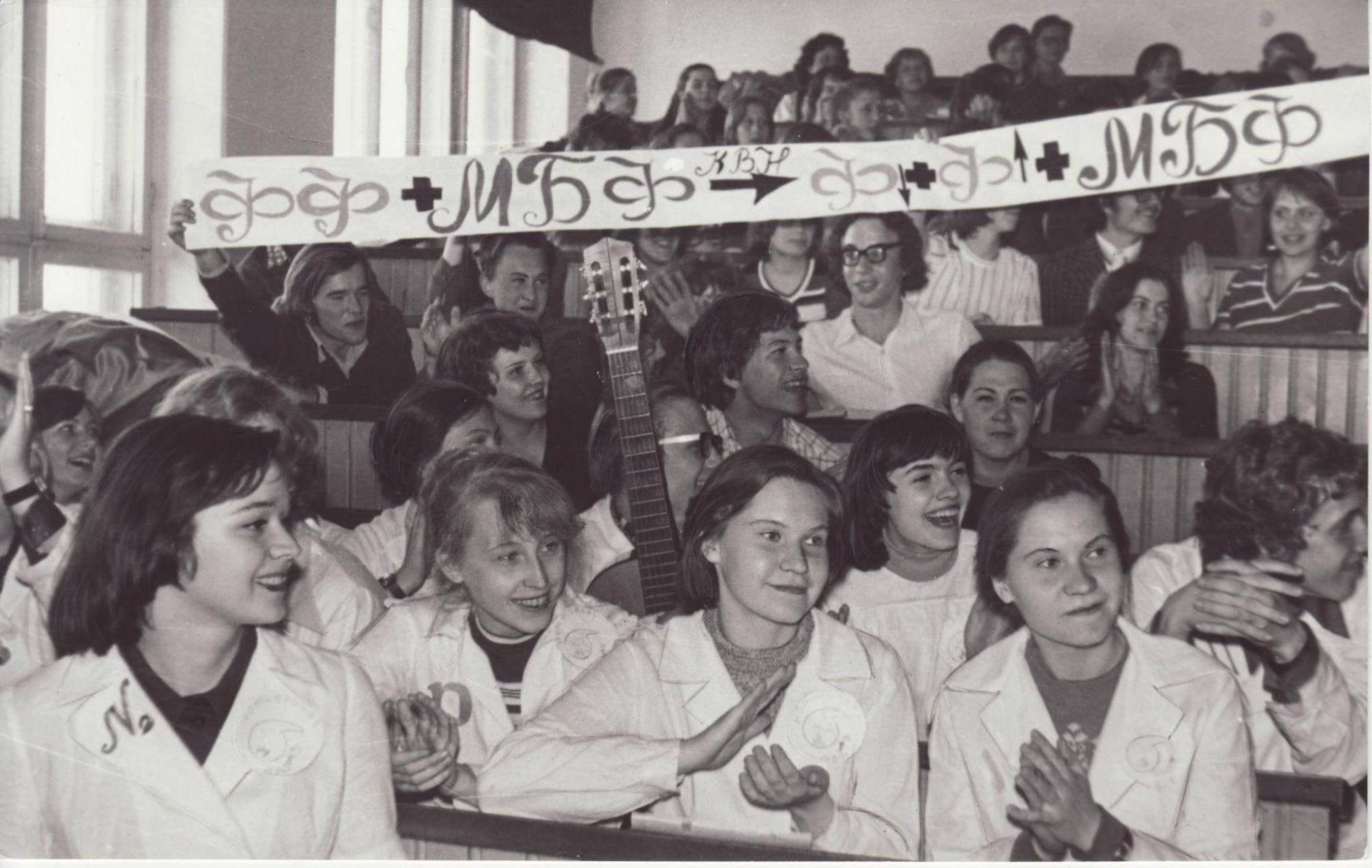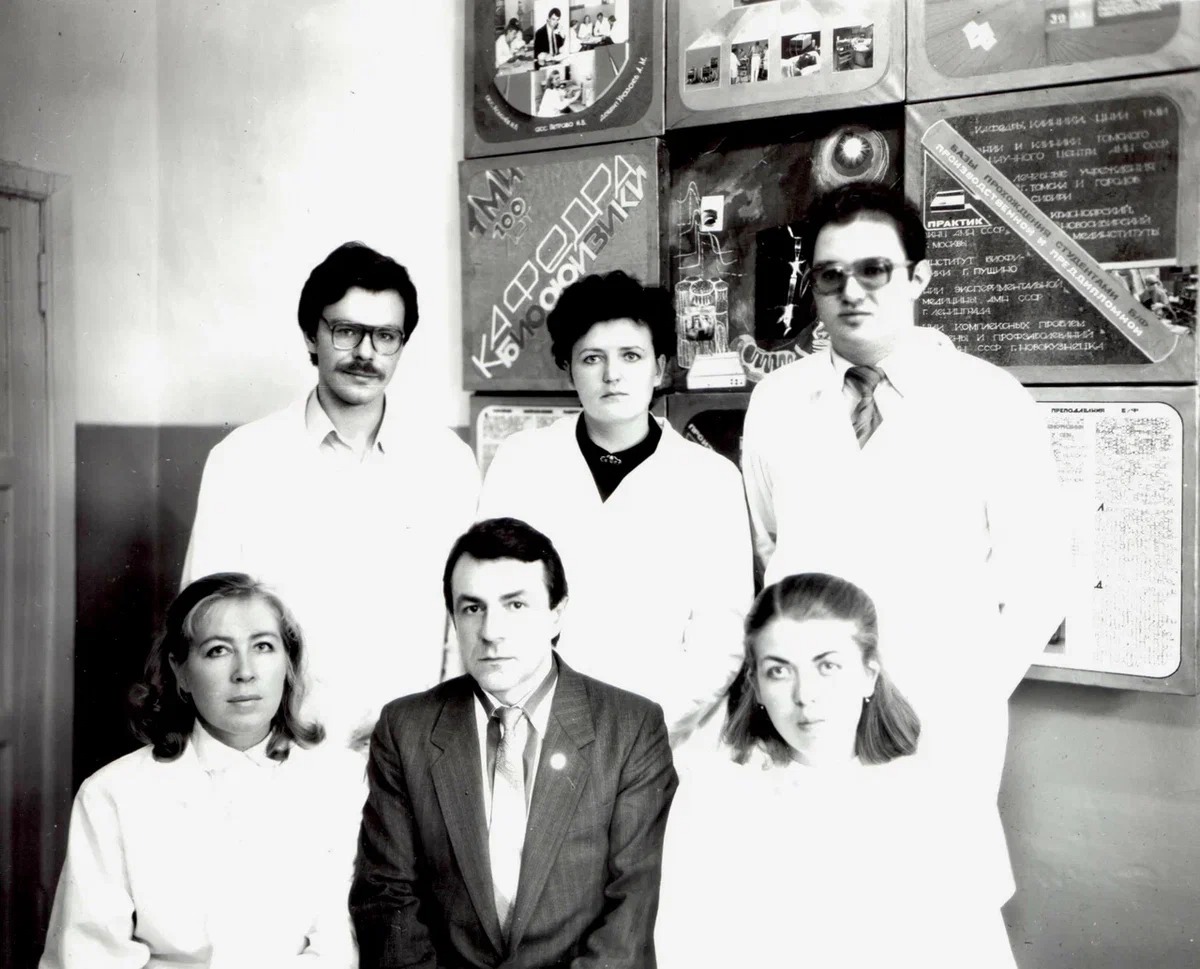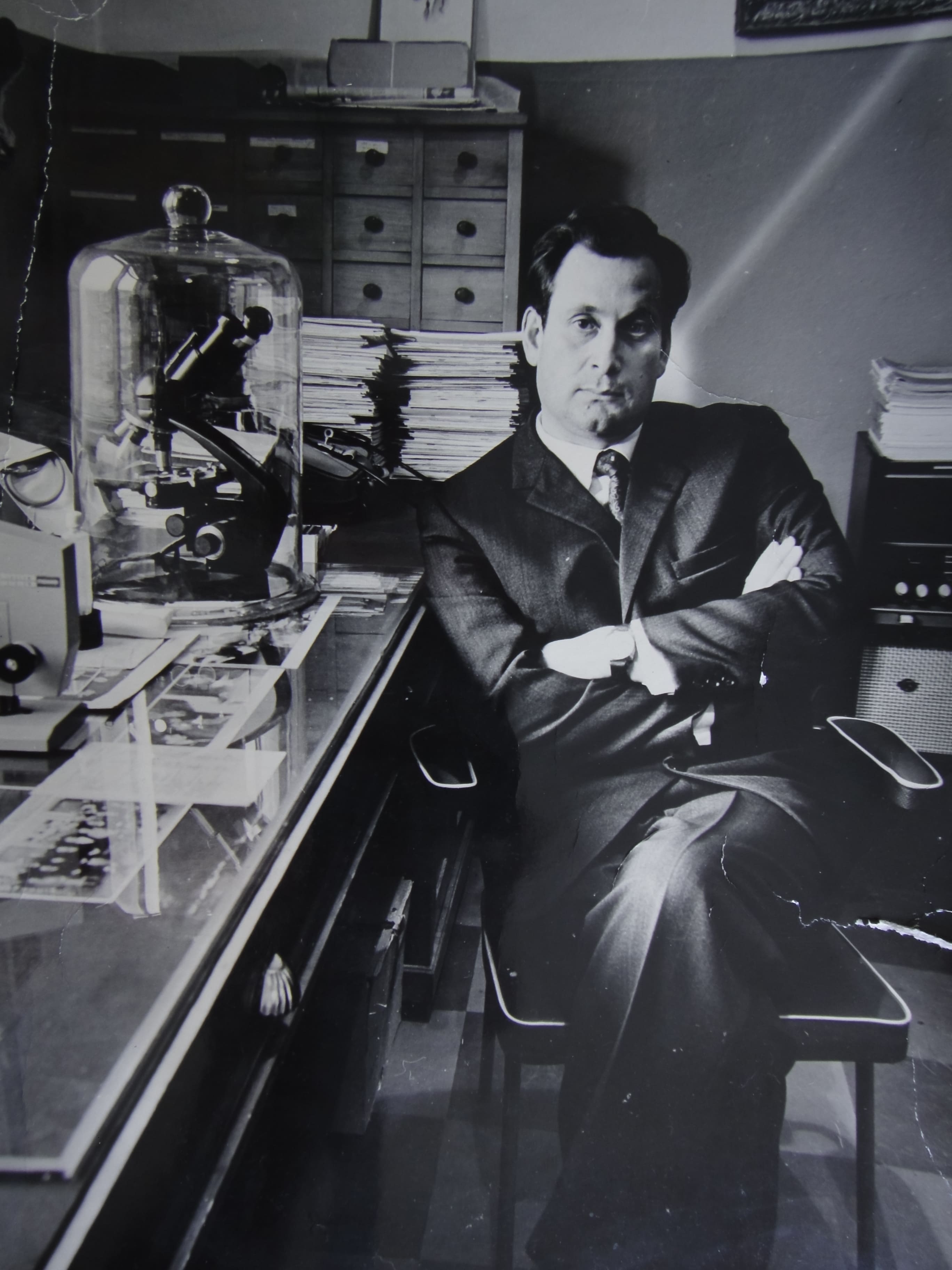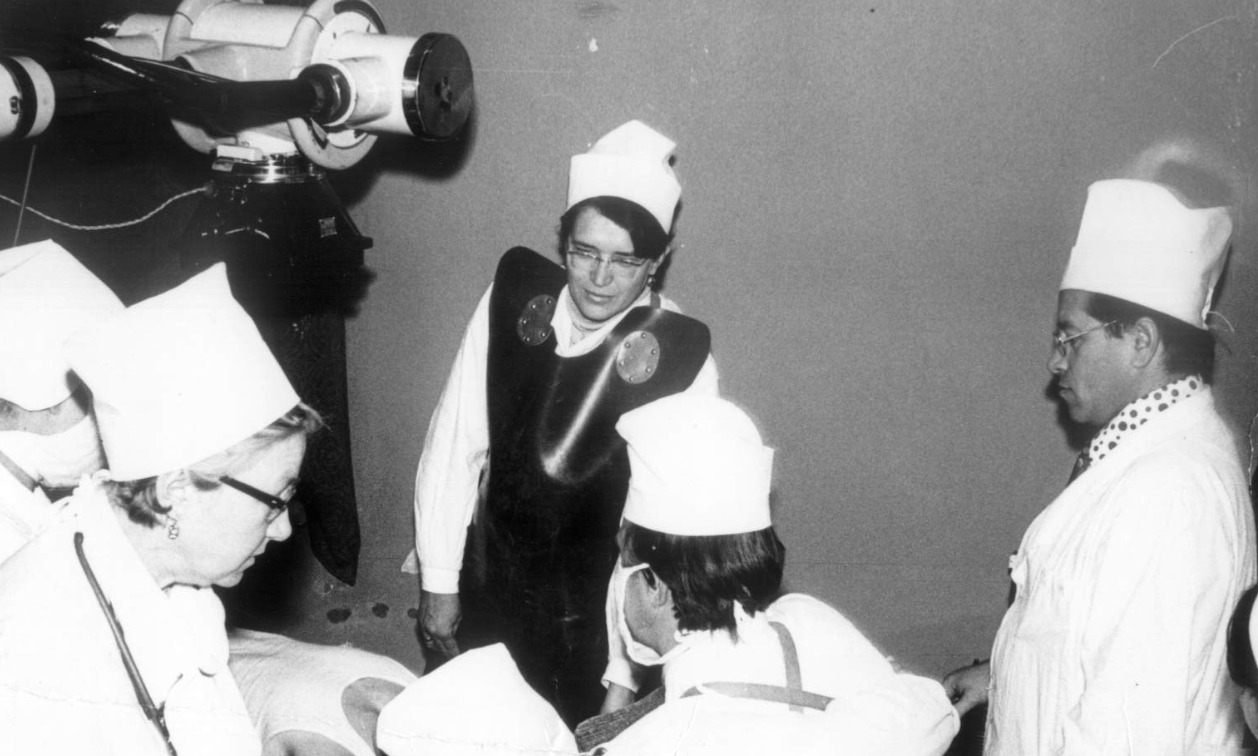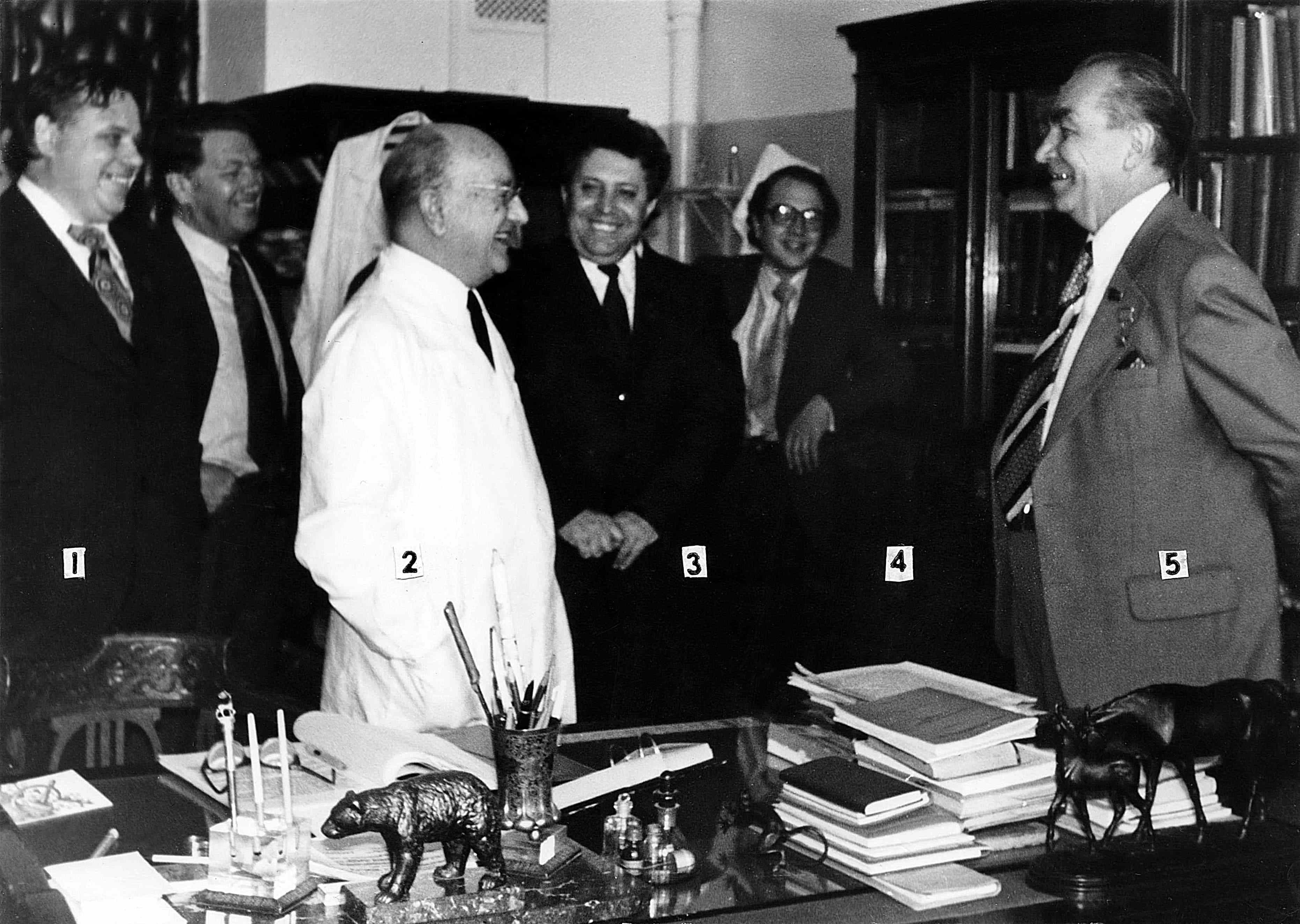Siberian State Medical University (SibMed) is one of the oldest and most authoritative medical education institution in Russia. It was founded on May 16, 1878 by the decree of the Emperor Alexander II as the Imperial University in Tomsk. In March 1880, a construction committee was set up. The architect A.K. Bruni designed the project of the main buildings. It took almost 8 years to complete the construction works.
SibMed History
Imperial University (1888-1930)
The grand opening of the Imperial University took place on July 22, 1888. The university consisted of only one department, namely the Department of Medicine. It was the only education institution in Asian part of Russia.

Foundation of the Imperial University (August 26, 1880)
The first lecture of the professor S.I. Korzhinsky was called “What is life?” and was held on September 13, 1888.
Right from the start the University was organized as the center for scientific and educational activities. Outstanding Russian scientists from Moscow, St. Petersburg and Kazan (N.A. Gesekhus, S.I. Zalessky, N.M. Maliev, A.S. Dogel, A. M. Zaitsev, S.I. Korzhinsky, E.A. Leman and N.F. Kashchenko) laid down the necessary foundation to develop high-quality medical education and research in Tomsk. Siberia was regarded as the “terra incognita” for young scientists who were looking for new knowledge and experience. Tomsk was a lab where it was possible to test the most daring ideas in practice, lay the foundation for individual scientific schools and new fields of study.
To ensure learning and research activities for students and lecturers, the Main Library was opened. In 1888, there were collected 96 thousand books.
At the same year, the construction of departmental clinics and infectious barracks began. The work was completed in 1892. Later, a hygiene building (1893) and a clinical outpatient clinic (1902) were built. In 1906, the Institute of Bacteriology was opened. Next year, using the architect Guta’s design, a three-floored building that was taken by the Institute of Anatomy was finished.

Entrance to the faculty clinics (1904)
In 1908, the hospital was opened. It was located outside the University campus. The professor P.I. Tikhov, director of the hospital since 1903, and the professor V.V. Sapozhnikov, Rector of the University, played a major role in the hospital foundation. The University hospital was the second hospital of its kind in Russia.
During the period from 1891 to 1913, 162,202 outpatient visits were registered at the university’s departmental clinics; 7,872 major and 12,549 minor operations were performed.

Professor E.G. Salishchev during the operation (1890s)
The world-famous scientific schools were formed and successfully developed. The outstanding Russian physiologists (A.A. Kulyabko and B.I. Bayandurov), pathophysiologists (P.M. Albitsky, A.V. Reprev, P.P. Aurorov, A.D. Timofsevsky, L.F. Larionov, D.I. Goldberg, E.D. Goldberg), surgeons (E.G. Salishchev, P.I. Tikhov, V.M. Mysh, A.G. Savinykh, G.V. Mukhadze, V.V. Pekarsky), pharmacologists (N.V. Vershinin), therapists (M.G. Kurlov, I.A. Kassirsky, D.D. Yablokov, A.I. Nesterov), pediatricians (O.D. Sokolova-Ponomareva), anatomists (G.M. Iosifov, D.A. Zhdanov), histologists (A.S. Dogel), microbiologists (S.P. Karpov), immunologists (N.V. Vasiliev) studied and worked here.

Museum of SibMed Division Schools
In 1908, A.E. Smirnov, an ordinary professor at the department of embryology and histology, organized the Student Pirogov Society, one of the first student scientific societies in Russia. To give the students access to modern science, an annual competition of student works was announced. The winners received gold and silver medals and honorable reviews.
In the early 20s, the question about the reorganization of higher medical education arose. In August 1930, the Department of Medicine was divided into two: Department of Sanitation and Hygiene and Department of General Medicine, which were later transformed to the Tomsk Medical Institute.
Tomsk Medical Institute (1930-1991)
By the Decree of the People's Commissariat of Health of the RSFSR dated November 5, 1930, the Department of General Medicine and re-opened Department of Sanitation and Hygiene were separated from Tomsk Imperial University into a new independent institute, Tomsk State Medical Institute (Tomsk Medical Institute, TMI). Later the Institute was named after V.M. Molotov. The Institute was merged of 3 departments, namely, the Department of General Medicine, Department of Sanitation and Hygiene and Department of Maternity. The Department of Maternity was closed in 1932. The first director for the Institute became A.V. Shirshov, who previously worked as the head of the Tomsk Regional Health Department.

SibMed Clinics

D.I. Goldberg, Head of the Division of Pathophysiology with a group of IV year students of the Department of General Medicine (October 1944)
During the first 10 years of its independent existence, Tomsk Medical Institute more than doubled the number of students. On the eve of World War II, 2,421 students studied at the Institute. The Institute consisted of 2 departments (Department of General Medicine and Department of Sanitation and Hygiene), 40 divisions and 17 clinics with 700 beds. There were also a blood transfusion station, a vivarium with 1200 laboratory animals, 3 museums, a library with 150 thousand books. The total area of educational and scientific units was about 30 thousand m2. The construction of a new biological building on Kirov Street was completed. The number of medical and biological divisions were supposed to be moved there.
Tomsk Medical Institute during World War II
During the War, the staff and students took an active part in treatment of soldiers in Tomsk and on the battlefields. In 1945, Tomsk Medical Institute consisted of 5 departments (General Medicine, Sanitation and Hygiene, Dental, Pediatrics, and Pharmacy). Student groups began to replenish due to demobilized soldiers. On September 1, 1945, about 2,400 students started studying at the Institute.
In the years 1945-1950, about half of the students were former soldiers. Some of them continued their studies at graduate schools.

Evacuation hospital No. 2483 on the basis of the department clinics of Siberian State Medical University

Evacuation hospital No. 2483 on the basis of the department clinics of Siberian State Medical University
Tomsk Medical Institute during 1946-1990
In the 50s, Tomsk Medical Institute assisted in the establishment of newly opened medical institutes in Barnaul, Kemerovo and Tyumen, sending its lecturers to work at these universities. For many years, the divisions of Tomsk Medical Institute have been training scientific and pedagogical personnel for new universities in the PhD and residency programs.
In 1967, Tomsk Medical Institute was awarded the Order of the Red Banner of Labor for training medical personnel.
In 1975, the Department of Biomedicine was opened. It was the second department of its kind in Russia.
In the 80s, 5 large research institutes were created in Tomsk (oncology, cardiology, mental health, medical genetics, pharmacology), which currently form the Tomsk Scientific Center of the Siberian Branch of the Russian Academy of Medical Sciences. In 2002, the Institute of Perinatology, Obstetrics and Gynecology were added.
Siberian State Medical University Today
Nowadays, SibMed is the industry leader in the healthcare sector and a participant in the Priority 2030 program.
Siberian State Medical University is a large scientific, educational and clinical center, which includes 5 departments and 1 institute. More than 8.5 thousand students from 79 Russian regions and 40 countries study at SibMed.
In 2015, Siberian State Medical University became the first medical university in Russia to be accredited by the Skolkovo Technology Park. Since 2017, SibMed has also obtained the status of the only medical flagship university in Russia.

SibMed Main Building
SibMed students have a unique opportunity to undergo training and practice at multidisciplinary clinics, where annually more than 20 thousand patients from all over Russia receive medical care. The clinics are equipped with all necessary modern equipment: a 128-slice CT scanner, MRI, gamma camera (γ-camera), endoscopic and ultrasound complexes, etc.
A training simulation center of European level successfully operates at Siberian State Medical University. It is one of two centers in Russia that has received accreditation by the European Society for Simulation Applied to Medicine (SESAM).

SibMed Simulation Center
A new milestone in the development of SibMed became its victory in the “Priority 2030” program held by the Ministry of Science and Higher Education.

Siberian State Medical University is recognized as an industry leader in the healthcare sector
The university have started to implement 4 strategic projects (Precision Medicine, Bionic Digital Platforms, Targeted Theranostics, and Transformation of Medical and Pharmaceutical Education) to solve the industry tasks. Each project embodies the transformation of departments by combining the global and national research agenda, advanced clinical practice and new educational technologies. Thus, SibMed as an industry leader will form a new image and perception of a medical worker in Russia.
A world-class Biobank and Technology Implementation Center have been opened. The first Russian digital pre-university platform for applicants (“MedClass”) has been developed and launched.

Bionic Digital Platforms Lab
The University cares about the future of its students and graduates and offers various career opportunities. SibMed implements services and programs for the development of soft skills, research and academic competencies (such projects as s “Teaching Assistant”, “Leaders 2030” and others.


